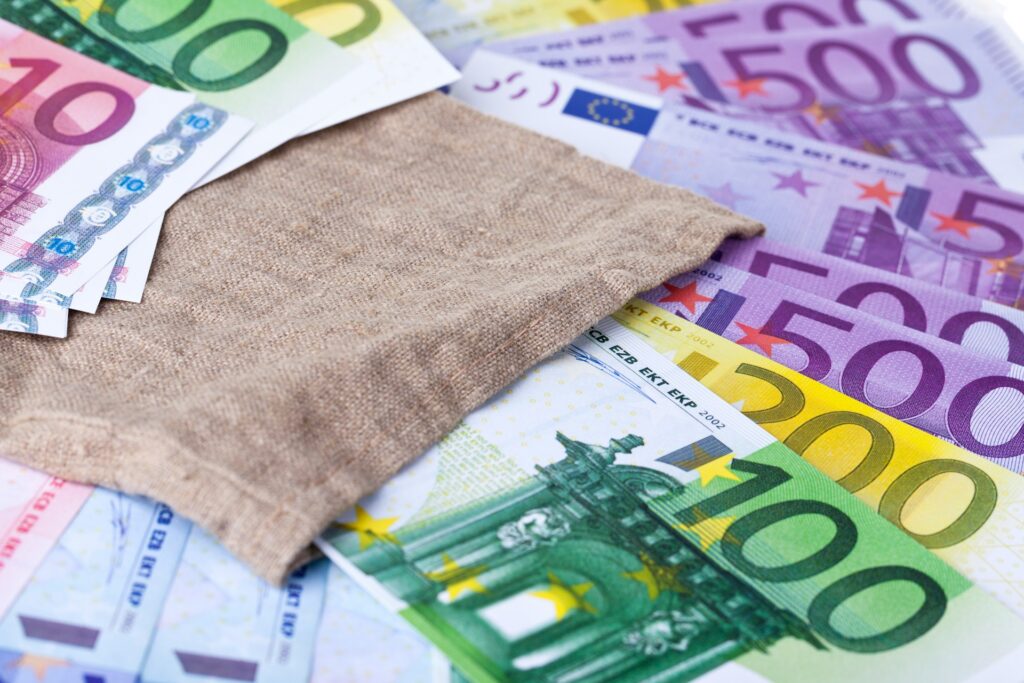Before Your Trip to Spain
The Weather in Spain

Spain experiences four distinct seasons, each offering unique weather patterns and opportunities for different activities.
Spring in Spain is a time of mild temperatures and blooming landscapes. The weather varies by region, with northern areas experiencing cooler and wetter conditions, while the south starts to warm up significantly. Average temperatures range from 15°C (59°F) to 22°C (72°F). This season is ideal for sightseeing and outdoor activities, as the country emerges from winter with colorful flora and comfortable weather.
Summer is characterized by hot, sunny weather, especially in central and southern Spain. Northern coastal areas remain milder, with temperatures averaging 20°C to 25°C (68°F to 77°F), while cities like Seville and Madrid can exceed 35°C (95°F). The Canary Islands enjoy consistent warmth without extreme heat, averaging 22°C to 28°C (72°F to 82°F). This season is perfect for beach vacations and enjoying Spain’s vibrant nightlife and festivals.
Autumn brings cooler temperatures and more variable weather, with the north experiencing more rain. Average temperatures drop to 15°C to 25°C (59°F to 77°F), making it a pleasant time for travel and exploring cities without the summer crowds. The countryside is lush from late summer rains, and the harvest season offers a bounty of local produce and wine festivals.
Winter in Spain is mild compared to northern Europe, especially along the Mediterranean coast and in the south. Northern regions and higher altitudes, like the Pyrenees, can see colder temperatures and snowfall, making them popular for winter sports. Coastal areas like Andalusia enjoy mild winters with temperatures ranging from 10°C to 18°C (50°F to 64°F). This season is quieter, offering a more relaxed pace and the chance to experience local traditions and festivals.
How to Dress in Spain – Seasonal Considerations
Spring (March to May)
Spring in Spain can be quite variable, with cooler mornings and evenings and warmer afternoons. Lightweight layers are essential, allowing you to adjust to the changing temperatures throughout the day. Pack long-sleeved shirts, light sweaters, and a medium-weight jacket. Comfortable walking shoes are a must for sightseeing, and don’t forget an umbrella or a light raincoat for occasional spring showers.
Summer (June to August)

Summer is hot and dry, especially in central and southern Spain. Light, breathable clothing is essential. Opt for cotton or linen shirts, shorts, and dresses. A wide-brimmed hat, sunglasses, and high-SPF sunscreen are crucial for protection against the intense sun. Sandals or light shoes are appropriate for most activities. If you plan to visit religious sites, bring a shawl or light scarf to cover your shoulders as a sign of respect.
Autumn (September to November)
Autumn temperatures can range from warm to cool, gradually getting colder as the season progresses. Layering remains important, with light sweaters, long-sleeved tops, and a heavier jacket for the cooler days. Comfortable, waterproof shoes are advisable due to increased rainfall. This is also a good time to bring along a scarf and a hat for additional warmth in the evenings.
Winter (December to February)
Winter in Spain varies greatly by region. In the north and mountainous areas, it can be quite cold and snowy, requiring warm clothing such as a heavy coat, sweaters, and insulated boots. In the south and along the Mediterranean coast, winters are milder but still cool, so pack a medium-weight coat, sweaters, and long pants. Accessories like gloves, hats, and scarves are useful for chilly mornings and evenings. Rain is more common in winter, so a waterproof jacket or umbrella is also recommended.
These guidelines should help you stay comfortable and appropriately dressed for Spain’s diverse climates throughout the year
The Currency in Spain

Spain uses the euro (€) as its official currency. Coins come in denominations of 1, 2, 5, 10, 20, and 50 cents, as well as 1 and 2 euros. Banknotes are available in 5, 10, 20, 50, 100, 200, and 500 euro denominations. Credit and debit cards are widely accepted, and ATMs are readily available throughout the country, making it easy for travelers to access cash. It’s advisable to carry some cash for small purchases and in rural areas where card payments might not be accepted.
Where to Exchange Money in Spain
Exchanging money in Spain can be conveniently done at various locations. Airports and major train stations have currency exchange counters, though they often charge higher fees and offer less favorable exchange rates. Banks are a reliable option, typically offering competitive rates and lower fees, but they may have limited hours, especially in smaller towns.
Currency exchange offices, known as “casas de cambio,” are found in tourist areas and provide a convenient service, though rates can vary widely. ATMs are another efficient way to obtain euros; using your debit or credit card at an ATM generally provides a good exchange rate, but check with your bank about international withdrawal fees. Lastly, some hotels also offer currency exchange services, but like airports and train stations, they may not provide the best rates.
Tips for Exchanging Money in Spain
Travel Vaccines for Spain
When in Spain, it is crucial to know the essential emergency numbers to ensure quick assistance in case of any emergencies. The primary emergency number for all types of emergencies, including police, fire, and medical services, is 112. This number is toll-free and can be dialed from any phone, including mobile phones, throughout the country.
For specific services, you can also use the following numbers:
Police: 091 (National Police) and 062 (Civil Guard)
Medical Emergencies: 061
Fire Brigade: 080
Additionally, for roadside assistance, you can contact the Royal Automobile Club of Spain (RACE) at 900 100 200. It’s advisable to have these numbers saved in your phone and written down in an easily accessible place to ensure you can quickly reach the appropriate services in an emergency situation.
Vegetarian, Vegan and Gluten-free Eating in Spain

Spain’s culinary landscape, traditionally rich in meat and seafood, is becoming increasingly accommodating to vegetarian, vegan, and gluten-free diets. Major cities like Madrid, Barcelona, and Valencia now feature numerous restaurants offering diverse vegetarian and vegan options. Traditional dishes like vegetarian paella, gazpacho, and patatas bravas are often adapted to suit these diets.
Gluten-free eating is also gaining popularity, with many restaurants offering gluten-free menus or modifications. Typical gluten-free Spanish dishes include tortilla Española, pulpo a la Gallega, and flan. Supermarkets stock a variety of vegetarian, vegan, and gluten-free products, making it easier for those with dietary restrictions.
Do’s and Dont’s in Spain
Do’s
- Do learn basic Spanish phrases; even simple greetings and phrases show respect and can enhance your experience.
- Do try the local cuisine; Sample traditional dishes like paella, tapas, and churros.
- Do embrace the siesta; Many shops close in the afternoon for a siesta, so plan your activities around this.
- Do visit local markets; Explore markets like La Boqueria in Barcelona for fresh produce and local delicacies.
- Do respect meal times; Lunch is usually served between 1:30 PM and 3:30 PM, and dinner often starts after 9 PM.
- Do dress appropriately; Casual but neat attire is appreciated, especially when visiting churches or more formal establishments.
- Do enjoy the nightlife, Spain is famous for its vibrant nightlife, especially in cities like Madrid and Barcelona.
- Do explore beyond the cities, Visit charming villages and the countryside to experience the full range of Spanish culture.
Don’ts
- Don’t expect punctuality; Spaniards have a more relaxed attitude toward time, so be patient with schedules.
- Don’t leave tips directly on the table, Hand the tip directly to the server or include it in the bill.
- Don’t be offended by personal questions; Spaniards may ask about your personal life as part of friendly conversation.
- Don’t wear beachwear away from the beach; Swimwear is for the beach or poolside only; cover up when away from these areas.
- Don’t enter a church during mass if sightseeing; Wait until the service is over to explore.
- Don’t assume everyone speaks English; While many do, especially in tourist areas, it’s courteous to start with Spanish.
- Don’t skip the fiesta; Participate in local festivals and celebrations for a genuine cultural experience.
- Don’t rush through meals; Meals are a social event in Spain; take your time to enjoy the food and company.
What to Pack for Spain
Travel Adapter for Spain
When traveling to Spain, it’s important to ensure your electronic devices are compatible with the local power system. Spain uses Type C and Type F plugs, both featuring two round pins. The standard voltage is 230 V, and the frequency is 50 Hz. To avoid any inconvenience, bring a universal travel adapter that includes Type C and Type F configurations. This will cover your needs not just in Spain but also in other European countries.
Additionally, check if your devices support dual voltage, typically indicated by “100-240V, 50/60Hz” on the device or charger. If your devices are not dual voltage, you’ll need a voltage converter to prevent damage. It’s also wise to bring multiple adapters if you have several devices to charge. By being prepared with the right adapters and converters, you can keep your electronics powered throughout your stay in Spain.
Wifi Access and Mobile Connectivity in Spain
WiFi access in Spain is widespread, especially in urban areas and popular tourist destinations. Most hotels, cafes, restaurants, and public spaces such as airports and shopping centers offer free WiFi to their customers. Additionally, many cities have implemented free public WiFi networks in certain areas. However, the quality and speed of these connections can vary, and it is advisable for visitors to use secure connections to protect their personal data.
Mobile connectivity in Spain is generally reliable and robust, with extensive coverage across the country. Spain has a well-developed mobile network infrastructure, supporting 4G and increasingly 5G in major cities and towns. Travelers can easily purchase prepaid SIM cards from major providers like Movistar, Vodafone, and Orange, which offer a range of data plans to suit different needs. These providers also offer eSIM options for compatible devices, making it convenient for tourists to stay connected without changing physical SIM cards.
In Your Suitcase
- Versatile clothing suitable for the season (e.g., lightweight for summer, layers for cooler months)
- Comfortable walking shoes
- Swimwear
- Hat, sunglasses, and sunscreen
- Power adapter for Spanish outlets (Type C or F)
- Portable charger
- Phrasebook or language app
- Refillable water bottle
- Small umbrella or rain jacket
- Map or guidebook (or offline maps on your smartphone)
- Snacks
- Small first aid kit and personal medications
- Camera or smartphone for photos
- Copies of important documents (passport, travel insurance)
- Lightweight scarf or shawl (for modesty in religious sites)
In Your Daypack
- Water bottle
- Small umbrella or rain jacket
- Map or guidebook (or offline maps on your smartphone)
- Snacks
- Small first aid kit and personal medications
- Camera or smartphone
- Copies of important documents (passport, travel insurance)
- Lightweight scarf or shawl











